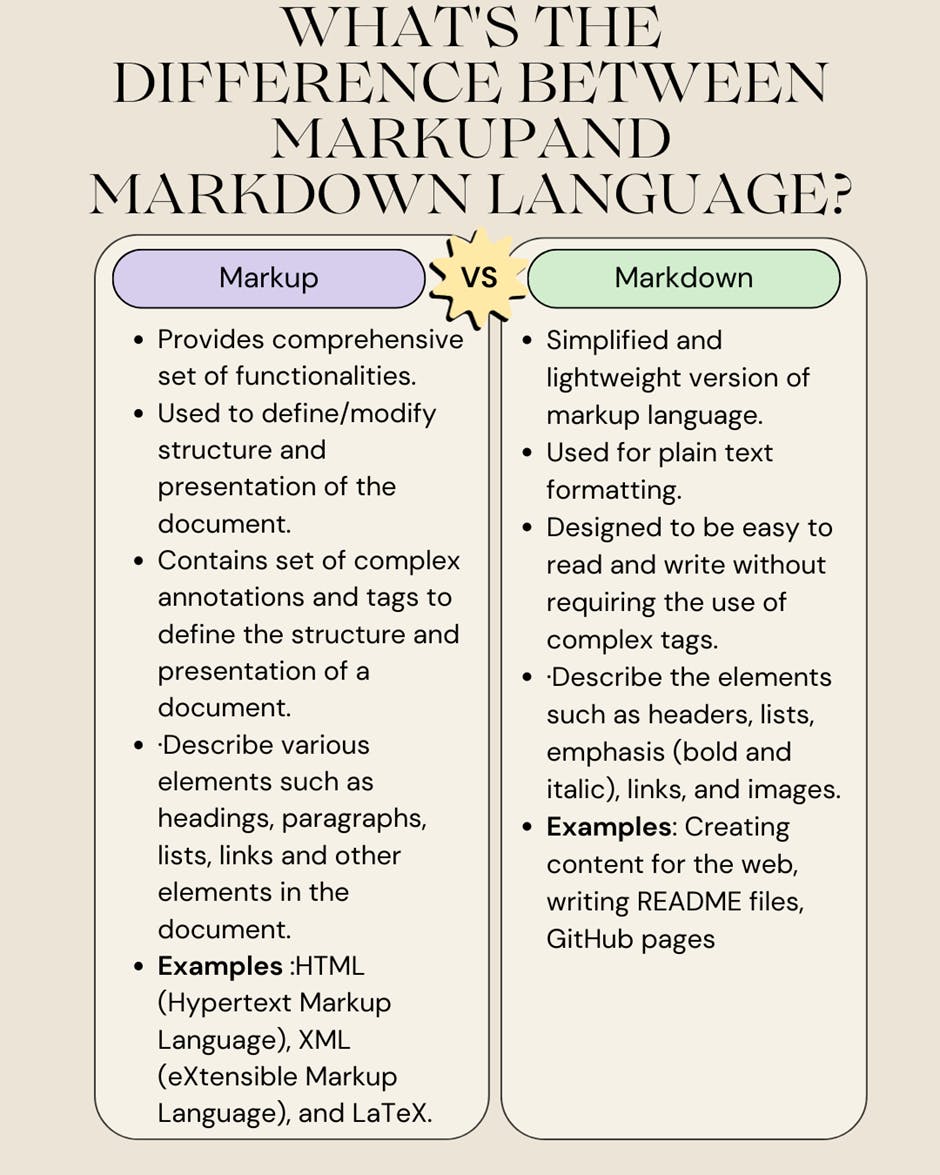From Markdown to Markup: Choosing the Right Language for Your Textual Needs
Markup Language
It offers specific features that are applied to the document's decoration. These characteristics consist of tags and annotations. Decorating a document merely entails making minor adjustments that will alter its appearance and feel. Thus, we may state that the document's structure and display are altered through the use of markup language.
It offers a more extensive range of features than markdown language.
It offers a collection of tags and annotations that may be applied to text. The document's presentation and structure can be changed with this set of tags and annotations.
It serves as a description for a variety of document elements, including lists, headings, paragraphs, links, and other elements.
LaTeX, XML (eXtensible Markup Language), and HTML (Hypertext Markup Language) are among the examples.
Markdown Language
It is a special type of markup language. It is a subset of markup language. It can be described as a more simplified kind of markup language. It is a more lightweight and simplified form of markup language.
Plain text formatting is the primary use for it.
It is made to be simple to read and write without the need for intricate tags.
README files, GitHub pages, and site content creation are all done using it.
Files in markdown have the .md extension.
It is employed to characterize items, including lists, headings, bold and italicized text, links, and images.
Comparing User-Friendly Markup Options: Markdown vs Traditional Markup Languages

Image: Textual Styling Wars: Markdown vs Standard Markup
Conclusion
A wide range of languages are included in the category of "markup language," which is used to annotate documents. Markdown is a condensed form of markup that was created especially to make writing and reading web content easier.
